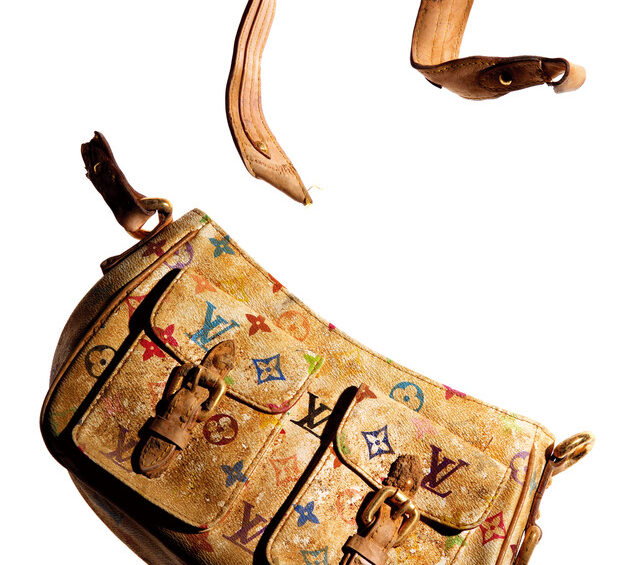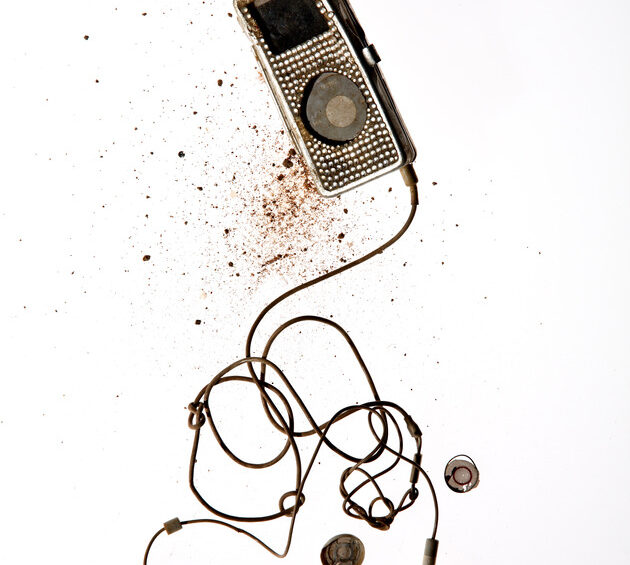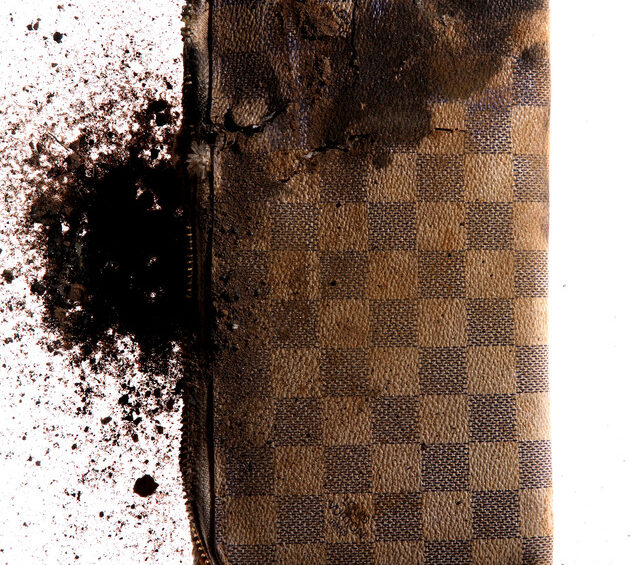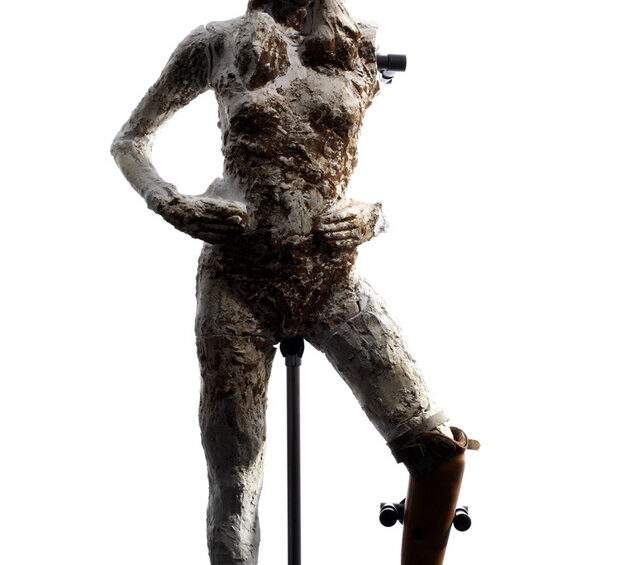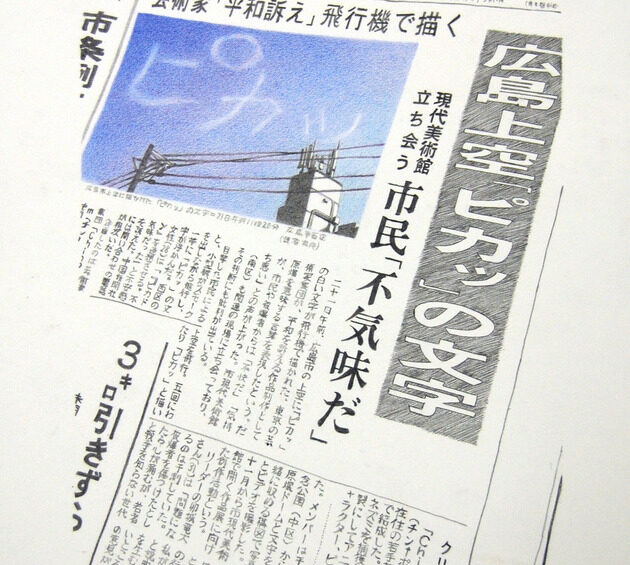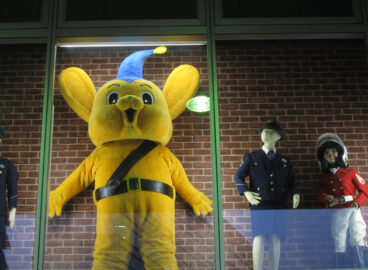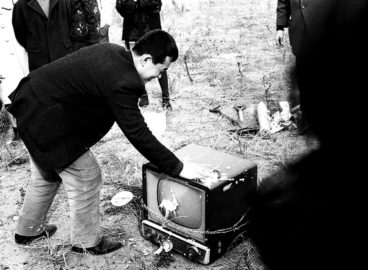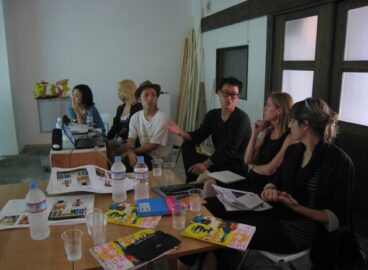The members of Chim↑Pom—Ellie, Ryuta Ushiro, Yasutaka Hayashi, Masataka Okada, Toshinori Mizuno, and Motomu Inaoka—have been working collaboratively since 2005. Perhaps best known for their performances and interventions made in immediate response to the 2011 Fukushima Daiichi nuclear plant disaster, the group has continuously engaged with social and political concerns in their native Japan and abroad. I first met the group during my trip to Japan in 2011 and subsequently presented their video KI-AI 100 (100 Cheers) at MoMA PS1. To accompany its post portfolio, Chim↑Pom has provided a new video that serves as an introduction to the collective and offers an overview of their art.
Chim↑Pom Introduction
SUPER RAT
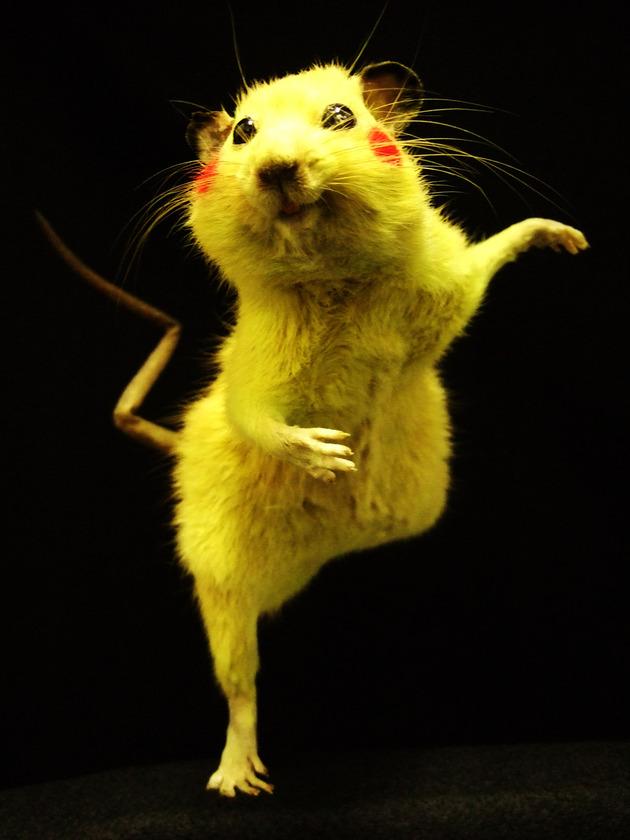

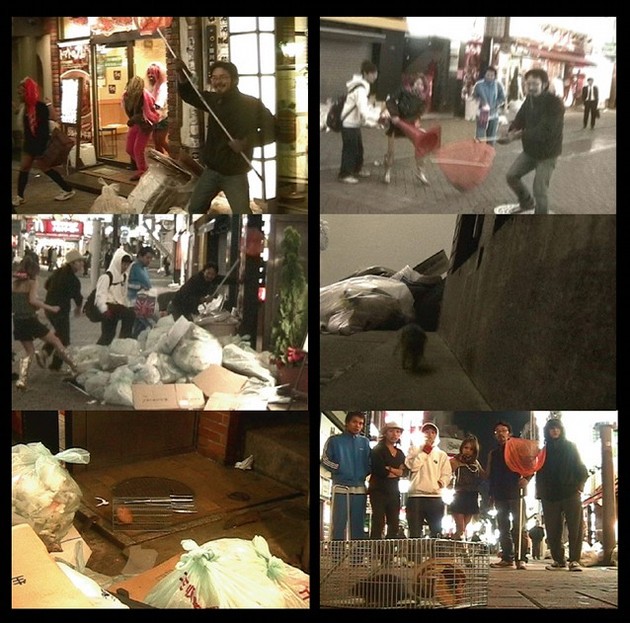
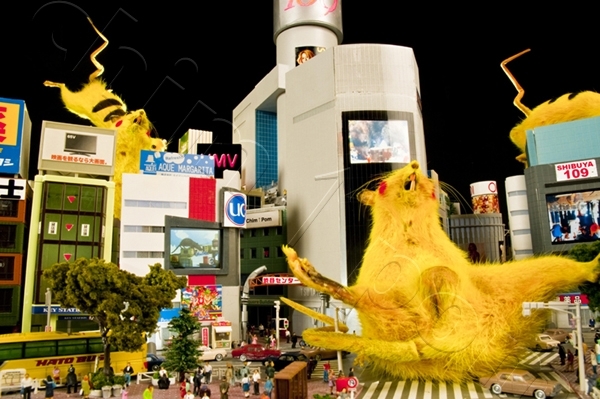
BLACK OF DEATH

Video (color, sound), 9:13 min., Lambda print. © Chim↑Pom. Courtesy MUJIN-TO Production
These videos and photos show Chim↑Pom herding ever-proliferating crows over Tokyo’s landmarks. In order to assemble crows from all quarters, Chim↑Pom walked around in parks with a stuffed crow and a megaphone amplifying the call crows make to summon others. Later, on the road, a car or motorcycle drove beneath the flying crows, increasing their numbers on the way to each destination. Photos taken at Tokyo’s landmarks were later packaged as a Tokyo souvenir postcard set.
These videos and photos show Chim↑Pom herding ever-proliferating crows over Tokyo’s landmarks. In order to assemble crows from all quarters, Chim↑Pom walked around in parks with a stuffed crow and a megaphone amplifying the call crows make to summon others. Later, on the road, a car or motorcycle drove beneath the flying crows, increasing their numbers on the way to each destination. Photos taken at Tokyo’s landmarks were later packaged as a Tokyo souvenir postcard set.
Thank You Celeb Project—I’m BOKAN

In 2007, Chim↑Pom headed for Cambodia to realize the dream of Ellie, who feels strong sympathy for celebrities: “I wanna do a charity in land mine fields like Princess Diana.” During their stay of a month or so, Chim↑Pom triggered land mine explosions with seven of their personal belongings, including Ellie’s luxury bag, an iPod, and a plaster figure of Ellie striking a celebrity pose. They were assisted by local residents who regularly clear land mines and care for children who have been injured by them. The project was planned as a charity benefit. Once they had returned to Japan from Cambodia, Chim↑Pom held an auction at P-HOUSE in Roppongi of the goods they had intentionally blown up. Proceeds from the sale would be donated to the local residents in Cambodia. The auctioneers were Ito Seiko and Ellie. Unlike an ordinary auction, where the prices go up, Chim↑Pom’s auction bids started at record prices paid for famous artworks and were gradually lowered until a bidder raised a hand. The prices were displayed in JPY, USD, and Cambodian Liel, and the numbers of prosthetic limbs that could be purchased for those amounts were projected on a screen at the front of the space. For example, when 12.6 billion JPY, the asking price for Damien Hirst’s For the Love of God, appeared as the starting price, the number of prosthetic limbs which that sum of money would buy (the number was greater than the total needed worldwide) appeared at the same time. The aim was to get all of the auction-goers to feel the shared responsibility and embarrassment of driving down the price of art and diminishing the number of prosthetic limbs that their money would buy. The auction raised a total of 2.1 million JPY, leaving 1.05 million JPY for Chim↑Pom, who visited Cambodia again in 2008. Although the situation in Cambodia had changed in the half a year since their initial visit, all of the money was given to those Cambodians who seemed to need it most.
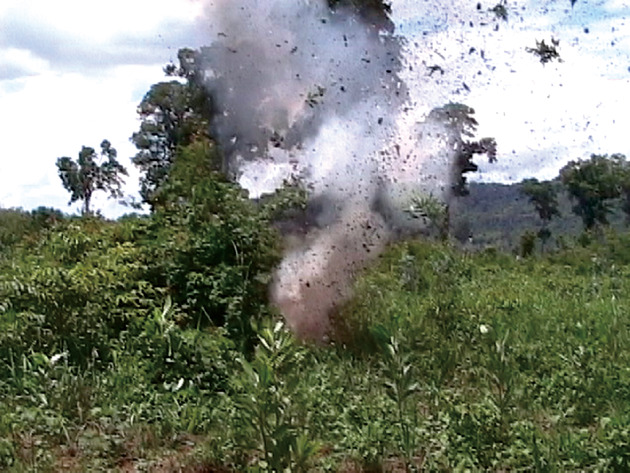
In 2007, Chim↑Pom headed for Cambodia to realize the dream of Ellie, who feels strong sympathy for celebrities: “I wanna do a charity in land mine fields like Princess Diana.” During their stay of a month or so, Chim↑Pom triggered land mine explosions with seven of their personal belongings, including Ellie’s luxury bag, an iPod, and a plaster figure of Ellie striking a celebrity pose. They were assisted by local residents who regularly clear land mines and care for children who have been injured by them. The project was planned as a charity benefit. Once they had returned to Japan from Cambodia, Chim↑Pom held an auction at P-HOUSE in Roppongi of the goods they had intentionally blown up. Proceeds from the sale would be donated to the local residents in Cambodia. The auctioneers were Ito Seiko and Ellie. Unlike an ordinary auction, where the prices go up, Chim↑Pom’s auction bids started at record prices paid for famous artworks and were gradually lowered until a bidder raised a hand. The prices were displayed in JPY, USD, and Cambodian Liel, and the numbers of prosthetic limbs that could be purchased for those amounts were projected on a screen at the front of the space. For example, when 12.6 billion JPY, the asking price for Damien Hirst’s For the Love of God, appeared as the starting price, the number of prosthetic limbs which that sum of money would buy (the number was greater than the total needed worldwide) appeared at the same time. The aim was to get all of the auction-goers to feel the shared responsibility and embarrassment of driving down the price of art and diminishing the number of prosthetic limbs that their money would buy. The auction raised a total of 2.1 million JPY, leaving 1.05 million JPY for Chim↑Pom, who visited Cambodia again in 2008. Although the situation in Cambodia had changed in the half a year since their initial visit, all of the money was given to those Cambodians who seemed to need it most.
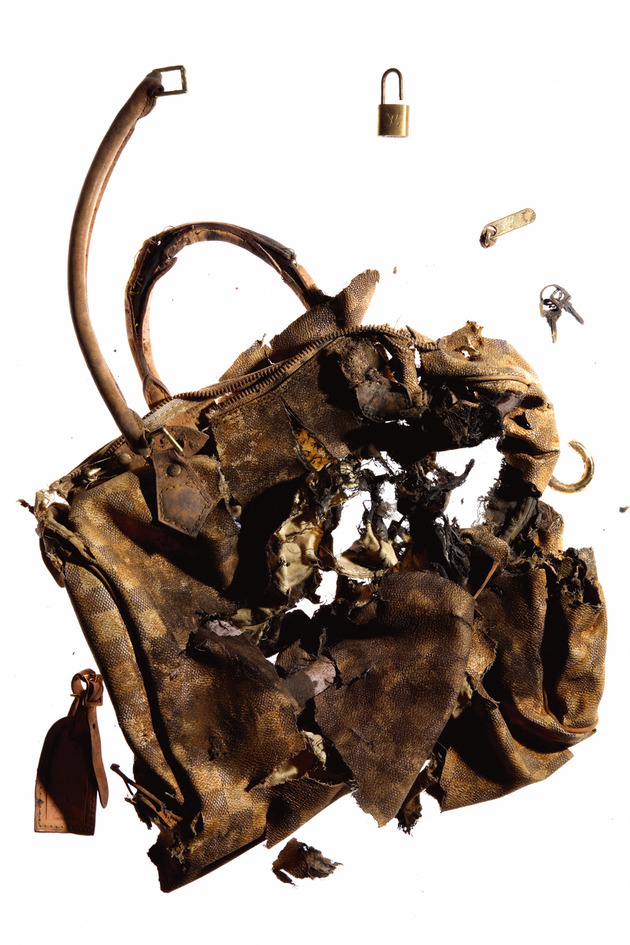
In 2007, Chim↑Pom headed for Cambodia to realize the dream of Ellie, who feels strong sympathy for celebrities: “I wanna do a charity in land mine fields like Princess Diana.” During their stay of a month or so, Chim↑Pom triggered land mine explosions with seven of their personal belongings, including Ellie’s luxury bag, an iPod, and a plaster figure of Ellie striking a celebrity pose. They were assisted by local residents who regularly clear land mines and care for children who have been injured by them. The project was planned as a charity benefit. Once they had returned to Japan from Cambodia, Chim↑Pom held an auction at P-HOUSE in Roppongi of the goods they had intentionally blown up. Proceeds from the sale would be donated to the local residents in Cambodia. The auctioneers were Ito Seiko and Ellie. Unlike an ordinary auction, where the prices go up, Chim↑Pom’s auction bids started at record prices paid for famous artworks and were gradually lowered until a bidder raised a hand. The prices were displayed in JPY, USD, and Cambodian Liel, and the numbers of prosthetic limbs that could be purchased for those amounts were projected on a screen at the front of the space. For example, when 12.6 billion JPY, the asking price for Damien Hirst’s For the Love of God, appeared as the starting price, the number of prosthetic limbs which that sum of money would buy (the number was greater than the total needed worldwide) appeared at the same time. The aim was to get all of the auction-goers to feel the shared responsibility and embarrassment of driving down the price of art and diminishing the number of prosthetic limbs that their money would buy. The auction raised a total of 2.1 million JPY, leaving 1.05 million JPY for Chim↑Pom, who visited Cambodia again in 2008. Although the situation in Cambodia had changed in the half a year since their initial visit, all of the money was given to those Cambodians who seemed to need it most.
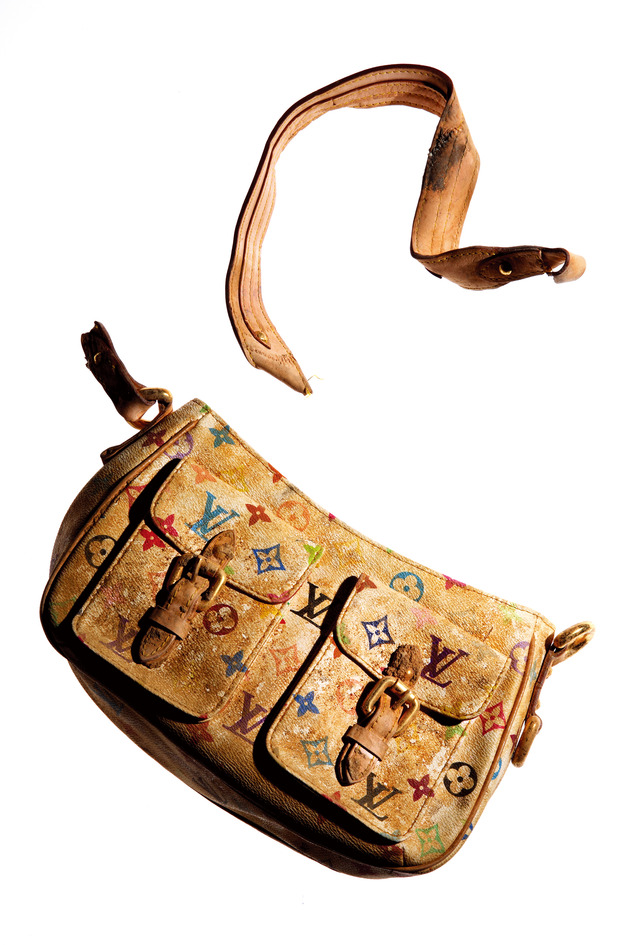
In 2007, Chim↑Pom headed for Cambodia to realize the dream of Ellie, who feels strong sympathy for celebrities: “I wanna do a charity in land mine fields like Princess Diana.” During their stay of a month or so, Chim↑Pom triggered land mine explosions with seven of their personal belongings, including Ellie’s luxury bag, an iPod, and a plaster figure of Ellie striking a celebrity pose. They were assisted by local residents who regularly clear land mines and care for children who have been injured by them. The project was planned as a charity benefit. Once they had returned to Japan from Cambodia, Chim↑Pom held an auction at P-HOUSE in Roppongi of the goods they had intentionally blown up. Proceeds from the sale would be donated to the local residents in Cambodia. The auctioneers were Ito Seiko and Ellie. Unlike an ordinary auction, where the prices go up, Chim↑Pom’s auction bids started at record prices paid for famous artworks and were gradually lowered until a bidder raised a hand. The prices were displayed in JPY, USD, and Cambodian Liel, and the numbers of prosthetic limbs that could be purchased for those amounts were projected on a screen at the front of the space. For example, when 12.6 billion JPY, the asking price for Damien Hirst’s For the Love of God, appeared as the starting price, the number of prosthetic limbs which that sum of money would buy (the number was greater than the total needed worldwide) appeared at the same time. The aim was to get all of the auction-goers to feel the shared responsibility and embarrassment of driving down the price of art and diminishing the number of prosthetic limbs that their money would buy. The auction raised a total of 2.1 million JPY, leaving 1.05 million JPY for Chim↑Pom, who visited Cambodia again in 2008. Although the situation in Cambodia had changed in the half a year since their initial visit, all of the money was given to those Cambodians who seemed to need it most.
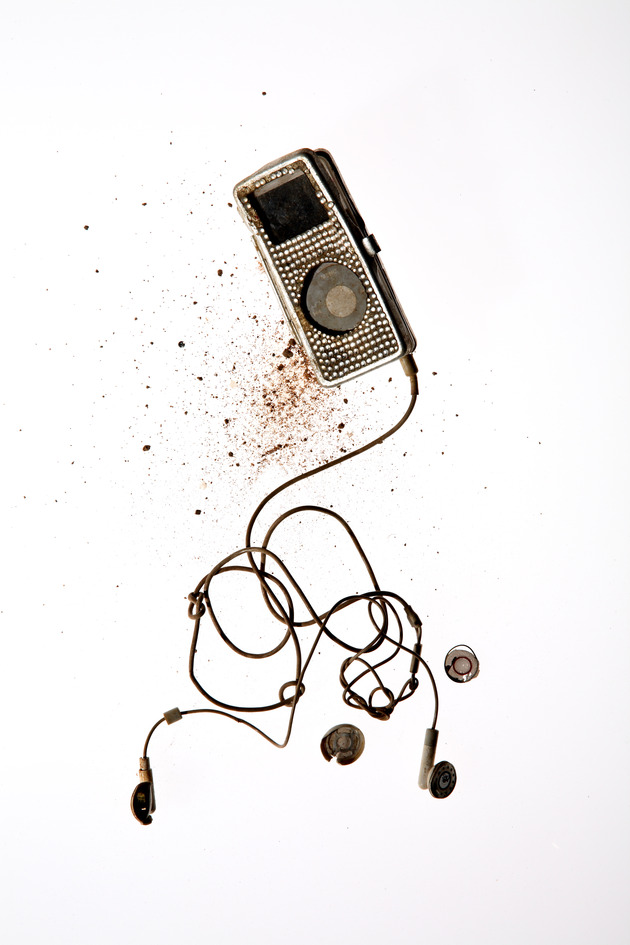
. 2007. Video (color, sound). © Chim↑Pom. Courtesy MUJIN-TO Production In 2007, Chim↑Pom headed for Cambodia to realize the dream of Ellie, who feels strong sympathy for celebrities: “I wanna do a charity in land mine fields like Princess Diana.” During their stay of a month or so, Chim↑Pom triggered land mine explosions with seven of their personal belongings, including Ellie’s luxury bag, an iPod, and a plaster figure of Ellie striking a celebrity pose. They were assisted by local residents who regularly clear land mines and care for children who have been injured by them. The project was planned as a charity benefit. Once they had returned to Japan from Cambodia, Chim↑Pom held an auction at P-HOUSE in Roppongi of the goods they had intentionally blown up. Proceeds from the sale would be donated to the local residents in Cambodia. The auctioneers were Ito Seiko and Ellie. Unlike an ordinary auction, where the prices go up, Chim↑Pom’s auction bids started at record prices paid for famous artworks and were gradually lowered until a bidder raised a hand. The prices were displayed in JPY, USD, and Cambodian Liel, and the numbers of prosthetic limbs that could be purchased for those amounts were projected on a screen at the front of the space. For example, when 12.6 billion JPY, the asking price for Damien Hirst’s For the Love of God, appeared as the starting price, the number of prosthetic limbs which that sum of money would buy (the number was greater than the total needed worldwide) appeared at the same time. The aim was to get all of the auction-goers to feel the shared responsibility and embarrassment of driving down the price of art and diminishing the number of prosthetic limbs that their money would buy. The auction raised a total of 2.1 million JPY, leaving 1.05 million JPY for Chim↑Pom, who visited Cambodia again in 2008. Although the situation in Cambodia had changed in the half a year since their initial visit, all of the money was given to those Cambodians who seemed to need it most.
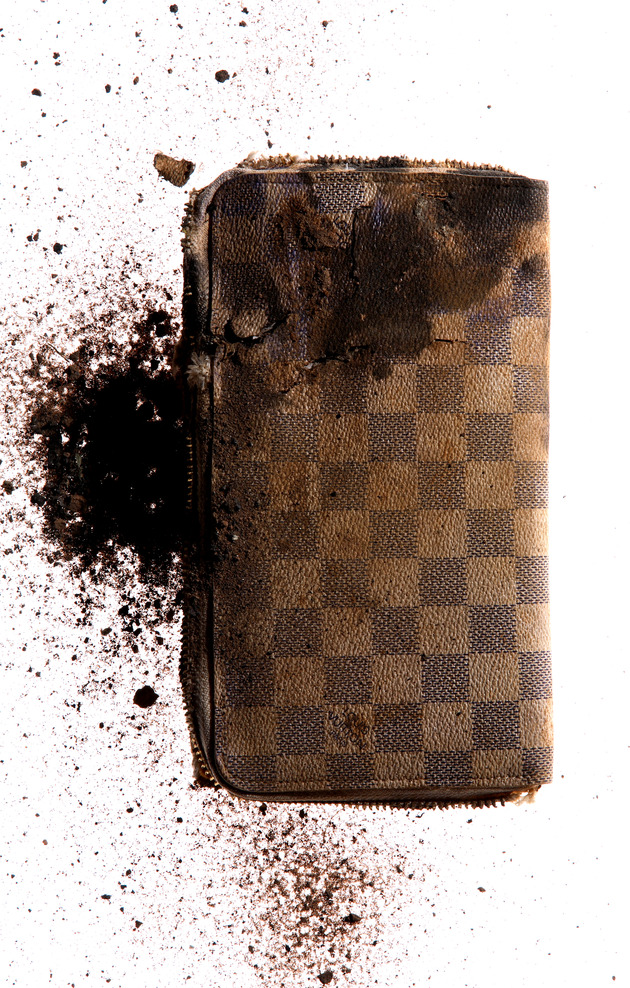
In 2007, Chim↑Pom headed for Cambodia to realize the dream of Ellie, who feels strong sympathy for celebrities: “I wanna do a charity in land mine fields like Princess Diana.” During their stay of a month or so, Chim↑Pom triggered land mine explosions with seven of their personal belongings, including Ellie’s luxury bag, an iPod, and a plaster figure of Ellie striking a celebrity pose. They were assisted by local residents who regularly clear land mines and care for children who have been injured by them. The project was planned as a charity benefit. Once they had returned to Japan from Cambodia, Chim↑Pom held an auction at P-HOUSE in Roppongi of the goods they had intentionally blown up. Proceeds from the sale would be donated to the local residents in Cambodia. The auctioneers were Ito Seiko and Ellie. Unlike an ordinary auction, where the prices go up, Chim↑Pom’s auction bids started at record prices paid for famous artworks and were gradually lowered until a bidder raised a hand. The prices were displayed in JPY, USD, and Cambodian Liel, and the numbers of prosthetic limbs that could be purchased for those amounts were projected on a screen at the front of the space. For example, when 12.6 billion JPY, the asking price for Damien Hirst’s For the Love of God, appeared as the starting price, the number of prosthetic limbs which that sum of money would buy (the number was greater than the total needed worldwide) appeared at the same time. The aim was to get all of the auction-goers to feel the shared responsibility and embarrassment of driving down the price of art and diminishing the number of prosthetic limbs that their money would buy. The auction raised a total of 2.1 million JPY, leaving 1.05 million JPY for Chim↑Pom, who visited Cambodia again in 2008. Although the situation in Cambodia had changed in the half a year since their initial visit, all of the money was given to those Cambodians who seemed to need it most.
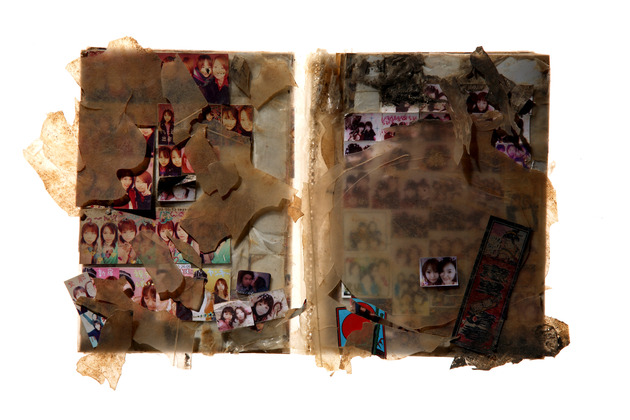
In 2007, Chim↑Pom headed for Cambodia to realize the dream of Ellie, who feels strong sympathy for celebrities: “I wanna do a charity in land mine fields like Princess Diana.” During their stay of a month or so, Chim↑Pom triggered land mine explosions with seven of their personal belongings, including Ellie’s luxury bag, an iPod, and a plaster figure of Ellie striking a celebrity pose. They were assisted by local residents who regularly clear land mines and care for children who have been injured by them. The project was planned as a charity benefit. Once they had returned to Japan from Cambodia, Chim↑Pom held an auction at P-HOUSE in Roppongi of the goods they had intentionally blown up. Proceeds from the sale would be donated to the local residents in Cambodia. The auctioneers were Ito Seiko and Ellie. Unlike an ordinary auction, where the prices go up, Chim↑Pom’s auction bids started at record prices paid for famous artworks and were gradually lowered until a bidder raised a hand. The prices were displayed in JPY, USD, and Cambodian Liel, and the numbers of prosthetic limbs that could be purchased for those amounts were projected on a screen at the front of the space. For example, when 12.6 billion JPY, the asking price for Damien Hirst’s For the Love of God, appeared as the starting price, the number of prosthetic limbs which that sum of money would buy (the number was greater than the total needed worldwide) appeared at the same time. The aim was to get all of the auction-goers to feel the shared responsibility and embarrassment of driving down the price of art and diminishing the number of prosthetic limbs that their money would buy. The auction raised a total of 2.1 million JPY, leaving 1.05 million JPY for Chim↑Pom, who visited Cambodia again in 2008. Although the situation in Cambodia had changed in the half a year since their initial visit, all of the money was given to those Cambodians who seemed to need it most.
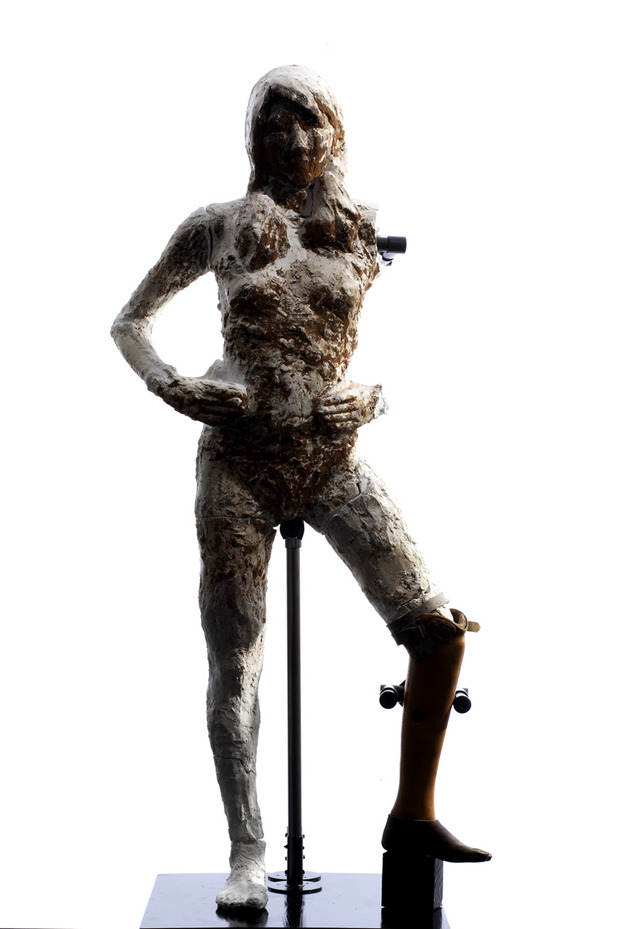
In 2007, Chim↑Pom headed for Cambodia to realize the dream of Ellie, who feels strong sympathy for celebrities: “I wanna do a charity in land mine fields like Princess Diana.” During their stay of a month or so, Chim↑Pom triggered land mine explosions with seven of their personal belongings, including Ellie’s luxury bag, an iPod, and a plaster figure of Ellie striking a celebrity pose. They were assisted by local residents who regularly clear land mines and care for children who have been injured by them. The project was planned as a charity benefit. Once they had returned to Japan from Cambodia, Chim↑Pom held an auction at P-HOUSE in Roppongi of the goods they had intentionally blown up. Proceeds from the sale would be donated to the local residents in Cambodia. The auctioneers were Ito Seiko and Ellie. Unlike an ordinary auction, where the prices go up, Chim↑Pom’s auction bids started at record prices paid for famous artworks and were gradually lowered until a bidder raised a hand. The prices were displayed in JPY, USD, and Cambodian Liel, and the numbers of prosthetic limbs that could be purchased for those amounts were projected on a screen at the front of the space. For example, when 12.6 billion JPY, the asking price for Damien Hirst’s For the Love of God, appeared as the starting price, the number of prosthetic limbs which that sum of money would buy (the number was greater than the total needed worldwide) appeared at the same time. The aim was to get all of the auction-goers to feel the shared responsibility and embarrassment of driving down the price of art and diminishing the number of prosthetic limbs that their money would buy. The auction raised a total of 2.1 million JPY, leaving 1.05 million JPY for Chim↑Pom, who visited Cambodia again in 2008. Although the situation in Cambodia had changed in the half a year since their initial visit, all of the money was given to those Cambodians who seemed to need it most.
Saya mau pergi ke TPA
Visiting one of the most popular Asian resorts in Bali, Chim↑Pom went to a vast field of garbage called TPA, the likes of which are unique to East Asian countries but unknown to tourists. They approached the site from the sky and the ground. On a tourist helicopter, Ellie enjoyed a flight over the beautiful ocean, and on the ground, Mizuno Toshinori hitchhiked to the destination on garbage trucks. They met briefly from the sky and the ground by waving their hands at each other, and Ellie threw a plastic bag from the helicopter onto the mountains of garbage below. After the helicopter departed, Mizuno retrieved the plastic bag, accompanied by people whom he had worked with in TPA and on the way to the site. Those people earn their living by selling plastic bags plucked from the vast garbage mounds. Chim↑Pom bought a large amount of garbage from them, including the plastic bag Ellie had thrown away, and then exhibited it as an installation at galleries in Indonesia and Japan. Next to the garbage, a byproduct of developed countries, they showed a video capturing actualities at the resort site.
Making the sky of Hiroshima “PIKA!”
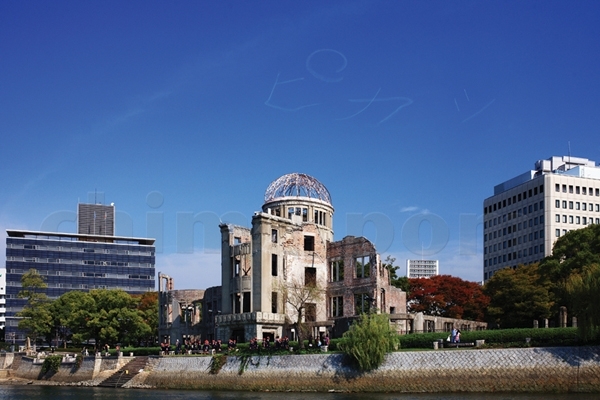
Writing the word “PIKA!” in a vapor trail over the Atomic Bomb Dome in Hiroshima, this work inscribed a mimetic word reminiscent of a panel from a comic book in the scenery of Hiroshima. The disappearing vapor trail meshes with the decay of memories as an expression of contemporary understanding of peace in postwar Japan.
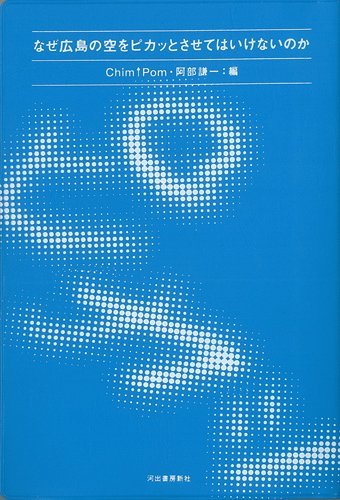
Edited by Chim↑Pom and Abe Kenichi, the book Naze Hiroshima No Sora Wo PIKA! To Saseteha Ikenainoka (Why Can’t We Make the Sky of Hiroshima “PIKA!”? MUJIN-TO Production, 2009) investigates not the work Making the Sky of Hiroshima “PIKA!” itself, but themes of “A-bomb/war,” “contemporary society,” and “expression” through various “PIKA!” disputes, as it was published prior to the public exhibition of the work.
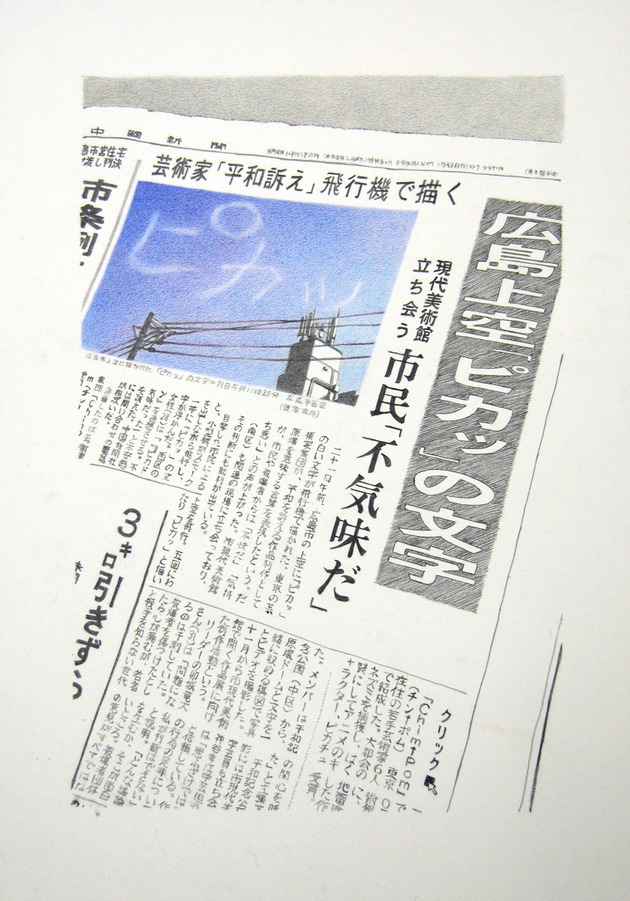
On October 21, 2008, Chim↑Pom was preparing Making the Sky of Hiroshima “PIKA!” for a solo show to be held at the museum studio of Hiroshima City Museum of Contemporary Art. Having chartered a skywriting plane, they had planned to write the word “PIKA!” with a vapor trail in the sky above the Atomic Bomb Dome and make a photo and video documentary of the event. However, on the following day, the Chugoku Shimbun newspaper published an article strongly condemning the act, along with a photo taken by a citizen who witnessed it. In response to the voices of outraged citizens and A-bomb victim organization representatives saying the act was “unpleasant,” the article claimed that “PIKA!” reminds people of “PIKA DON,”* and thus the work was a very shortsighted artistic decision by the group. This news was soon reported by a number of other online and print media outlets, growing into such a controversial social issue that Chim↑Pom eventually came to make a public apology for their “lack of advance announcement” in front of A-bomb victim organization representatives. The planned solo show had to be canceled as “voluntarily refrained.” At that time, Chim↑Pom lost the opportunity to show it to the public as their latest work. Later, Chim↑Pom united with those A-bomb victim organizations and began preparing Naze Hiroshima No Sora Wo PIKA! To Saseteha Ikenainoka [Why Can’t We Make the Sky of Hiroshima “PIKA!”?], a book investigating the series of disputes through interviews with the organizations and contributions from critics, artists, and the like. The book, which was published the following year in March 2009, examines the contrast between the United States’ and Japan’s positive and negative understandings of the A-bomb, between the victors who brought WWII to an end and the defeated who experienced the A-bomb’s effects, and the political aspects of Hiroshima’s international appeal as the A-bomb site. Making the Sky of Hiroshima “PIKA!” was eventually displayed at Maruki Gallery For The Hiroshima Panels (Saitama), a museum dedicated to housing The Hiroshima Panels, the most famous antiwar A-bomb art by the couple Maruki Iri and Toshi.
*Note: “PIKA DON” is a mimetic word created by A-bomb survivors, who did not even know the word “atomic bomb” at the time that they were expressing what they had experienced.
KI-AI 100

This video shows Chim↑Pom members together with friends in Soma City, Fukushima, in May 2011 doing 100 sequential yells of “KIAI,” which is a Japanese shout showing a fighting spirit. As Soma City was one of the areas affected by the Great East Japan earthquake, these people lost loved ones, their houses were washed away, and they spent over two months in the destroyed city despite fear of radiation. Unlike other areas intensively covered by mass media, Soma City suffered from a shortage of volunteers, probably because of its proximity to the Fukushima Daiichi Nuclear Power Station. These were real shouts ad-libbed by the young locals who, although victims themselves, had continued to provide relief and help with reconstruction. The piece was filmed in one cut.
LEVEL 7 feat. “Myth of Tomorrow”

A guerrilla-style installation in which a panel depicting the Fukushima nuclear disaster was added to Myth of Tomorrow, the existing mural by Okamoto Taro in Shibuya station. On a sheet of paper attached to a PVC panel, the image of rising black smoke in a skull shape was painted in the same style as the mural and appeared to be an integral part of it. News of the added panel spread via the Internet posts of passersby. Initially the new addition was regarded as an anonymous act and triggered controversy. At the REAL TIMES exhibition, it was revealed as the work of Chim↑Pom.
REAL TIMES
On April 11, just a month after 3/11, Chim↑Pom entered high-security areas of towns that had been seriously affected by the nuclear accidents. The group’s destination was a lookout point on the site of the TEPCO (Tokyo Electric Power Company) facility approximately 700 meters from the Fukushima Daiichi Nuclear Power Station. TEPCO had estimated radiation levels of 199 μSv/hr. Having parked their car near the main gate, members of Chim↑Pom walked twenty minutes to reach the lookout point, formerly a popular spot for viewing the New Year’s sunrise. They observed white smoke rising from Reactor unit 4 and the Pacific Ocean, into which a vast amount of contaminated water was leaking. Chim↑Pom stretched out a white flag, sprayed a red circle on it to resemble the red circle of the Japanese flag, changed it further into a radiation symbol, and raised the flag following the custom of reaching poles of inaccessibility, as on the moon or Mount Everest. The title REAL TIMES has three meanings: this very moment, right now; a historical time, as in the film title Modern Times; and a title of newspapers, like the New York Times. The story of Chim↑Pom’s trespassing inside the high-security area was never reported in the mass media.

Chim↑Pom installed a scarecrow wearing a protective suit and a gas mask on an abandoned farm close to the Fukushima Daiichi Nuclear Power Station. The work is a homage to evacuated locals and workers at the nuclear power station.



